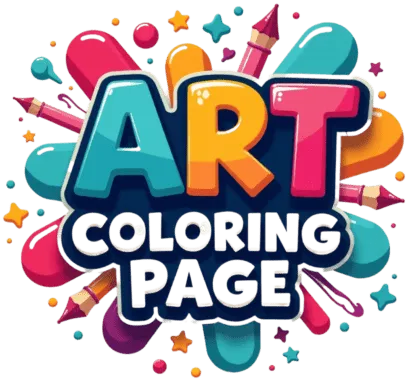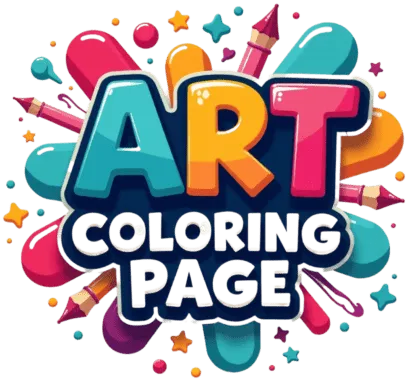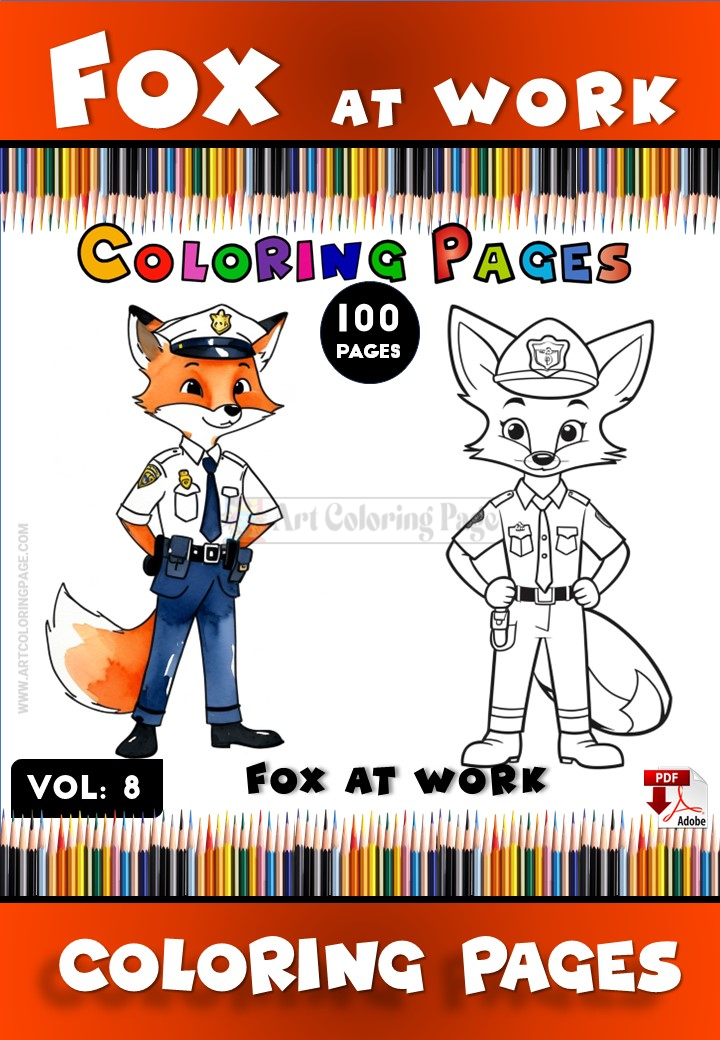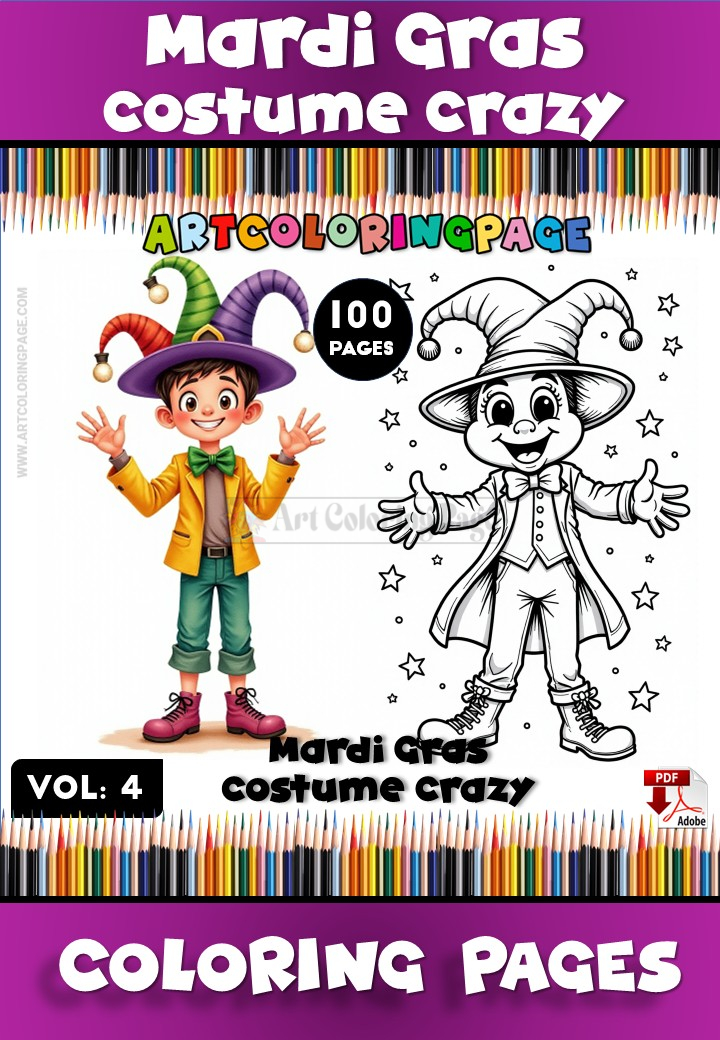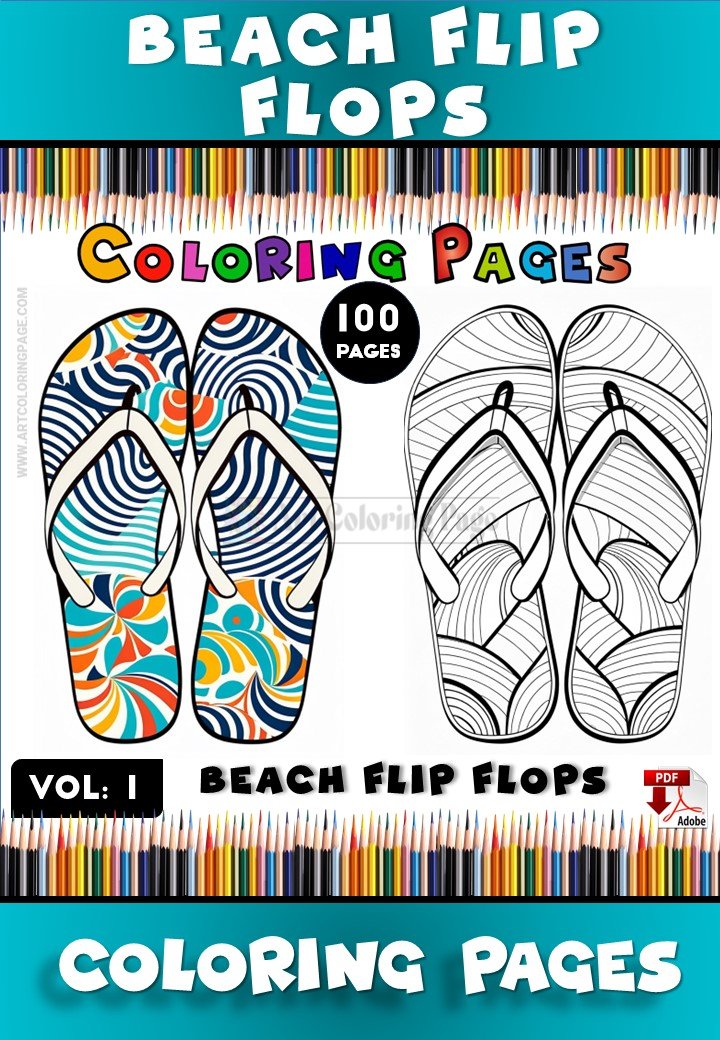Blogs coloring page
How Zombie Coloring Pages Can Make Your Halloween Party a Bloody Success
Dive into Zombie Coloring! Explore its appeal for horror fans, artists, and those seeking unique stress relief. Discover diverse styles, coloring techniques for decay, and creative uses for your finished undead art.
The zombie, a creature shambling from the depths of folklore into the forefront of modern pop culture, holds an undeniable and enduring fascination. From ancient Haitian Vodou traditions to George A. Romero’s cinematic masterpieces, and from hit TV series like The Walking Dead to countless video games, the undead have cemented their place as a pervasive and captivating archetype. They embody primal fears of contagion, societal collapse, and the loss of humanity, yet paradoxically, they also offer a canvas for exploring themes of survival, resilience, and the human condition. This complex allure extends beyond passive consumption, inviting active engagement in various forms of media and art.
Coloring, traditionally seen as a calming and often wholesome creative outlet, might seem an unlikely pairing with the grotesque and macabre world of zombies. However, this very contrast is what makes Zombie Coloring such a unique and compelling niche. It challenges conventional notions of what coloring can be, pushing boundaries and appealing to those who find beauty and intrigue in the darker, more unconventional aspects of art and storytelling. It’s a space where creativity meets the creepy, offering a fresh perspective on a beloved activity.
The core idea we will explore in this article is the multifaceted appeal and surprising benefits of Zombie Coloring. It’s not just about filling in outlines; it’s about delving into a specific aesthetic, experimenting with unconventional color palettes, and engaging with a genre that resonates deeply with a significant audience. Whether you’re a seasoned horror enthusiast, an aspiring artist looking to hone your skills in rendering decay, or simply someone seeking an unconventional form of stress relief, zombies coloring offers a surprisingly rich and rewarding experience.
This comprehensive article will guide you through the fascinating world of Zombie Coloring. We will delve into why this niche appeals to such diverse audiences, from horror fans to artists and even those seeking mindfulness. We’ll explore the wide array of styles and themes available, from realistically gruesome depictions to more comical interpretations. Furthermore, we’ll provide practical tips and techniques for bringing your undead creations to life (or un-life!), focusing on how to render decay, gore, and grime effectively. We’ll also uncover the therapeutic and creative benefits of engaging with this unique art form and suggest imaginative ways to utilize your finished zombie masterpieces. Prepare to unleash your inner undead artist and discover the unexpected joys of Zombies Coloring.
2. Why Zombies Coloring Appeals to Different Audiences
The appeal of Zombies Colouring is surprisingly broad, drawing in diverse audiences for a multitude of reasons that extend beyond a simple love for horror. This niche taps into various psychological, artistic, and cultural interests, making it a compelling creative outlet for many.
For horror enthusiasts, Zombie Coloring is a natural extension of their passion. It allows them to actively engage with the macabre and grotesque elements they find so captivating in films, games, and literature. Instead of just watching or reading, they can become creators, bringing their own interpretations of the undead to life with color. It’s a way to immerse themselves deeper into the zombie apocalypse aesthetic, exploring the details of decay, tattered clothing, and gruesome injuries in a hands-on manner. This active participation can be incredibly satisfying, allowing them to celebrate their favorite genre in a unique and personal way.
Artists and illustrators find Zombie Coloring particularly appealing for its unique challenges and opportunities to explore complex themes. The human form, even in decay, offers a rich subject for anatomical study, albeit with a twist. Artists can experiment with rendering textures like rotting flesh, exposed bone, and tattered clothing, pushing their skills in depicting decay and deterioration. It’s a chance to play with unconventional color palettes – muted greens, purples, grays, and browns – to evoke a sense of morbidity and despair. This niche provides a distinct subject matter that allows artists to hone their rendering techniques and develop a unique style, making it a valuable exercise for those looking to expand their artistic repertoire.
Perhaps unexpectedly, Zombie Coloring can also be a source of stress relief and mindfulness. Like other forms of adult coloring, the focused attention required to meticulously fill in intricate details, choose specific shades for decay, or create realistic textures can be incredibly grounding. This intense concentration draws the mind away from daily anxieties and worries, promoting a state of flow and present-moment awareness. The slightly unsettling nature of the subject matter can even provide a cathartic release for some, allowing them to safely engage with darker themes in a controlled, creative environment. It’s a unique form of escapism that offers mental decompression.
For fans of pop culture, Zombie Coloring provides a direct connection with beloved zombie franchises. Whether it’s The Walking Dead, Resident Evil, Left 4 Dead, or classic zombie films, many coloring pages feature characters, scenes, or stylistic elements reminiscent of these popular media. This allows fans to personalize their favorite undead worlds, creating their own versions of iconic zombies or apocalyptic landscapes. It’s a way to celebrate fandom and express appreciation for the storytelling and character design within the genre, making the coloring experience deeply resonant and enjoyable.
Finally, Zombies Coloring holds a special appeal for Halloween and other themed events. The spooky season is a prime time for all things macabre, and zombie coloring pages fit perfectly into this celebratory atmosphere. They can be used as fun activities for Halloween parties, unique decorations, or even as inspiration for costumes and makeup. Beyond Halloween, they can be a great addition to horror-themed gatherings, movie nights, or any event where a touch of the undead is desired. This seasonal and celebratory appeal adds another layer to why Zombies Coloring has carved out its own distinct and growing audience.

3. Exploring the Diverse Styles and Themes in Zombies Coloring
The world of Zombie Coloring is far from monolithic; it encompasses a surprisingly diverse range of styles and themes, catering to different artistic preferences and levels of comfort with the macabre. This variety ensures that whether you prefer chilling realism or lighthearted humor, there’s a zombie waiting for your creative touch. Understanding these different approaches can help you find the perfect pages to unleash your inner undead artist.
At one end of the spectrum are realistic and gruesome zombies, designed for mature colorists who appreciate the darker, more visceral aspects of the genre. These pages often feature highly detailed depictions of decay, exposed bone, torn flesh, and unsettling expressions. The emphasis is on anatomical accuracy (albeit in a state of decomposition) and the raw horror of the undead. Coloring these types of zombies allows artists to delve into complex shading, texture rendering, and the use of muted, sickly color palettes to evoke a truly chilling atmosphere. They are perfect for those who want to push their artistic boundaries and create genuinely unsettling pieces.
In stark contrast, cartoon and comical zombies offer a much lighter, often humorous take on the undead trope. These designs are characterized by exaggerated features, goofy expressions, and less emphasis on gore. They might feature zombies in funny situations, wearing silly hats, or engaging in unexpected activities. This style is often more accessible for a broader audience, including older children or adults who enjoy horror but prefer a less intense visual experience. Zombie Coloring in this style allows for brighter, more playful color palettes and encourages a sense of fun and whimsy, proving that even the undead can be amusing.
Another popular theme revolves around zombie apocalypse scenes. These pages often depict dynamic, action-packed narratives, showcasing hordes of zombies shambling through ruined cities, survivors battling the undead, or desolate landscapes ravaged by the outbreak. Coloring these scenes allows for a broader scope of artistic expression, incorporating elements of architecture, vehicles, and environmental decay alongside the zombies themselves. It’s an opportunity to tell a story through color, creating a sense of tension, chaos, or desperate survival. These pages are particularly appealing to fans of narrative-driven zombie media.
Beyond full scenes, many Zombie Coloring pages focus on individual zombie portraits and characters. These pages zoom in on the undead, highlighting their unique features, expressions, and the specific details of their decay. It might be a close-up of a zombie’s face, showcasing its vacant eyes and rotting teeth, or a full-body shot emphasizing its tattered clothing and shambling posture. Coloring individual characters allows for intense focus on rendering specific textures and details, bringing out the personality (or lack thereof) of each undead being. It’s a great way to practice character design and portraiture with a horror twist.
Finally, there are historical or themed zombies, which offer unique twists on the classic trope. This might include pages depicting zombie pirates, zombie cowboys, zombie knights, or even zombies from different historical periods, wearing decayed versions of period clothing. Some themes might even blend zombies with other genres, like steampunk zombies or cyberpunk zombies. These creative interpretations allow for immense artistic freedom and provide a fresh perspective on the undead, challenging colorists to think outside the box and combine different aesthetic elements. This diverse range ensures that the world of Zombie Coloring remains fresh, exciting, and endlessly inspiring for anyone willing to embrace its unique charm.
4. Tips and Techniques for Bringing Zombies to (Un)Life with Color
Bringing a zombie to “un-life” with color is a unique artistic challenge that requires a departure from conventional coloring techniques. Unlike vibrant landscapes or cheerful characters, Zombie Coloring demands a specific approach to palette, texture, and atmosphere to truly capture the essence of decay and the macabre. Mastering these tips and techniques will allow you to create truly chilling and authentic undead masterpieces.
The first crucial step is choosing a palette for decay. Forget bright, cheerful colors. Instead, lean into muted greens, sickly grays, desaturated browns, and bruised purples. These colors evoke the look of rotting flesh, gangrene, and decomposition. Think about the colors you see in decaying organic matter. For example, a base of pale green or gray for the skin, with subtle washes of purple or dark brown in shadowed areas, can create a convincing sickly pallor. Don’t be afraid to mix and layer these unconventional colors to achieve complex, unsettling tones.
Creating realistic textures is paramount for Zombie Coloring. Rotting flesh isn’t smooth; it’s uneven, pockmarked, and peeling. Use short, broken strokes with your colored pencils or markers to mimic this uneven surface. For exposed bone, use off-whites, yellows, and light browns, adding fine lines to suggest cracks and porousness. Tattered clothes should look worn and dirty; use dry-brush techniques or light, uneven strokes to create the appearance of frayed fabric and grime. Consider using a stippling effect (small dots) for areas of extreme decay or mold. The goal is to make the surface look tactile and unpleasant.
Adding gore and grime is often essential for a truly impactful zombie. For blood, think beyond just bright red. Fresh blood might be a vibrant crimson, but older, dried blood will appear darker, almost black or deep brown. Use thin lines for trickles and larger, irregular shapes for splatters. For grime and dirt, use various shades of brown and black, applying them unevenly to suggest mud, dust, or general filth accumulated from shambling through a post-apocalyptic world. Don’t forget subtle details like greenish-black mold or festering wounds, using darker, more concentrated colors in those areas.
Using light and shadow for depth is critical to enhancing the macabre atmosphere. Zombies are often depicted in dim, eerie lighting. Apply darker shades in areas that would naturally be in shadow – under the jawline, in eye sockets, within deep wounds, or under tattered clothing. Use lighter shades or even leave areas uncolored to suggest highlights on raised bones or glistening decay. This contrast between light and dark will give your zombie a three-dimensional quality, making it appear more menacing and realistic. Consider where your light source is coming from and apply shadows accordingly.
Finally, experiment with different mediums to achieve specific effects. Colored pencils offer excellent control for intricate details, layering, and blending to create subtle shifts in decay. Markers can provide bold, consistent color for larger areas, and their ability to layer can create interesting dark washes. For a truly gruesome effect, consider using watercolors or diluted inks for washes of sickly color, allowing them to pool in certain areas to mimic fluid or deep decay. A fine-tipped black pen can be used for outlining details, adding texture to teeth, or drawing in small, unsettling veins. Don’t be afraid to combine mediums – for example, a watercolor base with colored pencil details – to bring your Zombie Coloring to its full, terrifying potential.
5. The Therapeutic and Creative Benefits of Engaging in Zombies Colouring
While the subject matter might seem unconventional for a relaxing activity, engaging in Zombies Coloring offers a surprising array of therapeutic and creative benefits. Far from being merely a morbid pastime, it provides a unique avenue for emotional release, cognitive engagement, and artistic exploration, proving that even the undead can contribute to well-being.
One significant benefit is emotional release and catharsis. For some individuals, engaging with darker themes in a controlled, creative environment can be a healthy way to process anxieties or fears. The act of coloring a zombie, with its inherent themes of decay and destruction, can provide a safe outlet for expressing or confronting uncomfortable emotions. It allows for a symbolic engagement with the grotesque, which can be cathartic for those who find traditional “pretty” coloring pages less stimulating. It’s a way to externalize and manage internal feelings, transforming potential discomfort into a creative act.
Zombie Coloring also excels at developing attention to detail and focus. Many zombie designs, especially the more realistic or intricate ones, feature a wealth of small elements: torn clothing, exposed teeth, decaying skin textures, and subtle wounds. Meticulously coloring these details requires sustained concentration and precision. This intense focus draws the mind away from daily stressors and promotes a state of mindfulness, similar to meditation. The intricate nature of the designs demands a high level of engagement, which can be incredibly grounding and help improve overall attention span.
Furthermore, this niche encourages pushing creative boundaries. Unlike coloring a flower or a landscape, Zombie Coloring often requires unconventional color choices and experimental techniques. You’re not aiming for natural beauty but for realistic decay and unsettling aesthetics. This freedom from traditional color palettes allows colorists to explore new combinations, experiment with blending sickly greens and purples, and invent textures that mimic rot and grime. It challenges artists to think differently about color and form, fostering innovation and expanding their creative repertoire beyond conventional subjects.
The immersive nature of Zombie Coloring can also lead to significant stress reduction through escapism. When you’re deeply focused on rendering the intricate details of a zombie’s decaying face or a chaotic apocalypse scene, your mind is transported into that fictional world. This immersive experience provides a powerful distraction from real-world worries and anxieties. It’s a form of mental vacation, allowing the brain to disengage from stressors and find solace in a creative, albeit macabre, pursuit. The satisfaction of completing a detailed, unsettling piece can be incredibly rewarding and calming.
Finally, for aspiring artists and illustrators, Zombie Coloring can be an excellent way to build a unique art portfolio. The distinct subject matter allows colorists to showcase a specific style and a mastery of rendering challenging textures and themes. A portfolio featuring well-executed zombie art can demonstrate versatility, attention to detail, and a willingness to explore unconventional subjects, making it stand out. It’s an opportunity to develop a niche and attract an audience interested in horror or dark art, proving that even the undead can inspire truly compelling creative work.
6. Beyond the Page: Creative Uses for Your Finished Zombie Art
Once you’ve meticulously brought your undead creations to “un-life” through Zombie Coloring, the fun doesn’t have to stop there. Your finished artwork can be transformed into a variety of creative projects, adding a unique, macabre touch to your home, gifts, or even inspiring new artistic endeavors. These applications allow you to extend the enjoyment and showcase your distinct artistic style.
One of the most obvious and popular uses for finished zombie art is as Halloween decorations and party props. Cut out your colored zombies and use them to create spooky garlands, hang them from doorways, or tape them to windows for a chilling effect. Larger colored pages can be used as backdrops for a Halloween party photo booth, or even as elements in a haunted house setup. You can glue them onto cardboard to make standees or attach them to sticks for handheld props. Your personalized zombie art will add a unique and handmade touch to your spooky ambiance, making your Halloween truly unforgettable.
Your colored zombies can also be transformed into custom greeting cards and invitations. Imagine sending out a birthday card featuring a comical zombie, or a Halloween party invitation adorned with a gruesome one. Simply glue your finished zombie onto cardstock, add a personalized message, and you have a unique, thematic card that will surely stand out. This is a fantastic way to share your artistic talent and your love for the undead with friends and family, adding a personal touch to your correspondence.
For those who appreciate horror decor, framed artwork for themed spaces is an excellent option. If you have a dedicated “horror corner,” a game room, or simply a space where you enjoy darker aesthetics, framing your best Zombie Coloring pieces can add a touch of unique, personalized art. Choose a simple black frame to make the colors pop and enhance the macabre feel. A collection of framed zombie portraits or scenes can create a striking and conversation-starting display, showcasing your artistic skill and your passion for the genre.
In the digital age, sharing your finished zombie art online is a great way to connect with a community of like-minded enthusiasts. Take high-quality photos or scans of your colored pages and share them on social media platforms, art communities, or dedicated coloring groups. This allows you to receive feedback, discover other artists, and inspire others with your unique interpretations. Many online platforms celebrate unconventional art, and your Zombie Coloring can find a welcoming audience, fostering a sense of connection and shared interest.
Finally, your finished zombie art can serve as a powerful inspiration for storytelling and character design. Each colored zombie has its own unique look and implied history. Use your completed pages as prompts to develop narratives: What is this zombie’s backstory? How did they become undead? What kind of apocalypse do they inhabit? For aspiring writers or game designers, these visual cues can spark ideas for new characters, plotlines, or entire fictional worlds. It’s a way to extend the creative process beyond coloring, transforming your artwork into a springboard for new imaginative endeavors.
7. Conclusion: Embrace the Undead Art of Zombie Coloring
Our journey through the world of Zombies Coloring has revealed it to be a surprisingly rich and rewarding artistic niche. Far from being merely a morbid curiosity, it offers a unique blend of creative expression, therapeutic benefits, and a deep dive into a beloved pop culture phenomenon. We’ve explored its broad appeal, drawing in horror enthusiasts, artists, and even those seeking an unconventional path to stress relief and mindfulness.
We’ve delved into the diverse styles available, from chillingly realistic and gruesome depictions to lighthearted and comical interpretations, ensuring there’s a zombie for every artistic taste. We’ve also provided practical tips and techniques for bringing these undead figures to “un-life,” focusing on how to master palettes of decay, create realistic textures, and add the essential elements of gore and grime. The therapeutic and creative benefits are undeniable, offering emotional release, enhancing focus, and pushing artistic boundaries.
The act of engaging in Zombie Coloring is more than just filling in lines; it’s an immersive experience that allows for a unique form of escapism and self-expression. It challenges conventional notions of beauty in art, inviting colorists to find aesthetic value in the macabre and the grotesque. And once completed, your zombie masterpieces can be transformed into unique decorations, personalized gifts, or even serve as inspiration for new creative projects, extending their impact far beyond the page.
So, if you’re drawn to the darker side of creativity, if you appreciate the intricate details of decay, or if you simply seek an unconventional and engaging way to unwind, embrace the undead art of Zombie Coloring. It’s a niche that promises both artistic challenge and surprising satisfaction. Unleash your inner undead artist and discover the unique joys that await within this captivating genre. For a diverse collection of high-quality printable coloring pages, including a range of unique zombie designs, be sure to visit artcoloringpage.com. Your next chilling masterpiece awaits!
FAQ
Q1: Is Zombie Coloring suitable for children?
A1: It depends on the child’s age and sensitivity. While some Zombies Coloring pages are cartoonish and comical, many are realistic and gruesome. Parents should review the content to ensure it’s age-appropriate for their child.
Q2: What kind of colors should I use for realistic zombie coloring?
A2: For realistic zombies, focus on muted and desaturated colors like sickly greens, grays, pale blues, bruised purples, and various shades of brown. Avoid bright, vibrant colors unless used for specific effects like fresh blood.
Q3: Can coloring zombies help with stress relief?
A3: Surprisingly, yes! Like other forms of adult coloring, the focused attention required for Zombie Coloring can be very meditative, drawing your mind away from daily stressors and promoting a state of calm and mindfulness.
Q4: Where can I find good quality Zombies Coloring pages?
A4: You can find a variety of Zombies Coloring pages on platforms like artcoloringpage.com, as well as specialized horror art websites, Etsy, and some adult coloring book publishers.
Q5: What are some creative uses for finished zombie coloring pages?
A5: Finished zombie art can be used for Halloween decorations, custom greeting cards, framed artwork for themed rooms, or shared digitally on social media. They can also inspire storytelling or character design.
